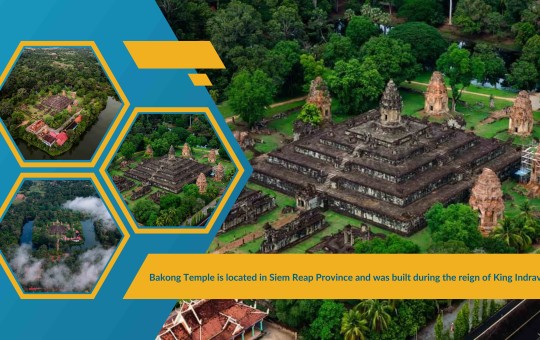
Bokator (Kun Khmer) and ChatGPT
As Cambodia celebrated its two-millennia-old civilization and culture during the Khmer New Year, one can’t help but reflect on the resurgence of the ancient martial art of Bokator or Kun Khmer. It’s especially noteworthy how the younger generation take pride in this world heritage recognized by UNESCO, even as they enthusiastically adopt emerging AI technologies like ChatGPT. In this article, we will explore the story of Bokator, accompanied by a poem generated by ChatGPT.
Bokator is a martial art with a long and fascinating history, deeply rooted in the culture and traditions of the Khmer people. Its roots can be traced back over a millennium to the Khmer Empire of Angkor, where it was developed as a combat system for the Khmer armies.
Bokator was a highly effective martial art, incorporating a wide range of techniques including strikes, throws, locks, and submissions. It was practiced by soldiers and warriors across the Khmer Empire, who used it to defend their kingdom from invaders and to assert their dominance on the battlefield. Over time, Bokator also became a popular form of self-defense and sport among the general population. It was passed down from generation to generation, with each new practitioner adding their own unique techniques and variations to the art.
Bokator was on the brink of extinction during the Khmer Rouge regime’s genocide, due to the loss of both Bokator masters and disciples who perished during that time. Thanks to the remarkable efforts of the survivors and the establishment of new training centers, Bokator martial art has experienced a revival in Cambodia after the country achieved lasting peace. It has risen from the ashes and has been restored to its former glory. Today, Bokator is not only a source of national pride for the Khmer people but also an important cultural heritage. In recognition of its significance, Bokator was inscribed on the UNESCO Representative List of the Intangible Cultural Heritage of Humanity in 2022. The philosophy of Bokator is deeply intertwined with Khmer culture and traditions. It emphasizes the importance of respect, discipline, and perseverance, and seeks to cultivate not just physical strength but also mental fortitude and spiritual awareness.
Bokator also places great importance on the connection between the body and the natural world. Many of its techniques are based on the movements of animals, such as the tiger, the snake, and the eagle. Through these movements, practitioners of Bokator seek to develop a deep understanding of their environment and to harness the power of nature. In conclusion, Bokator is a martial art with a rich and storied history, deeply rooted in the culture and traditions of the Khmer people. Its techniques and philosophy have been passed down through the centuries, evolving and adapting to meet the changing needs of its practitioners. Today, Bokator is an important cultural heritage that serves as a source of pride and inspiration for the Khmer people, and a symbol of their resilience and strength in the face of adversity.
I would like to present to you, the readers, a poem that ChatGPT has created to pay tribute to Bokator – a truly unique and unexpected amalgamation of thousand-year-old martial arts with cutting-edge digital technology.
Bokator, an art of Khmer pride
A thousand years of history to abide
From Angkor’s empire to modern day
Its techniques and philosophy here to stay
Versatile strikes, throws, locks, and more
Weapons used, like swords and staffs before
But unique to Bokator, an animal’s grace
Tiger, snake, and eagle, in every case
Respect, discipline, and perseverance
Philosophy to guide one’s adherence
Body and nature, a connection to make
A deeper understanding, for harmony’s sake
Warriors of old, Bokator’s true test
Defending their kingdom with its prowess
Then, for self-defense and sport’s delight
Popular with the people, a true sight
Khmer Rouge’s reign almost took it all
Master practitioners, victims of its fall
But a new generation, preserving the art
Teaching Bokator, right from the heart
UNESCO’s recognition, a moment of pride
The intangible heritage, standing by its side
For the Khmer people, a symbol of resilience
Bokator, forever, a testament to their brilliance.
Khmer national pride, but open to all
To embrace its art, a universal call
World heritage, for all to behold
Bokator’s legacy, forever to be told.
Rethy CHHEM is with Asian Vision Institute (AVI)




